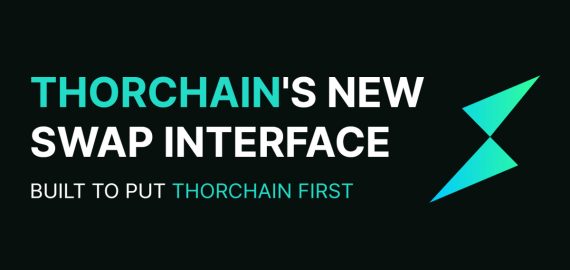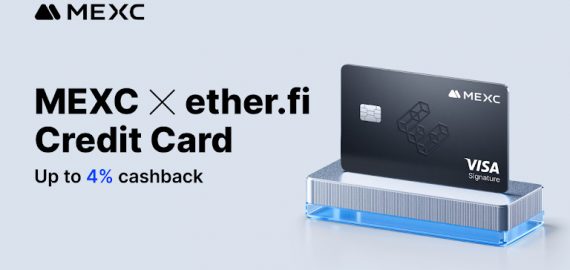Audrey Nesbitt Interview: From Visionary to Bottleneck, the Hidden Risk Founders Face

In Brief
Audrey Nesbitt’s new book argues that many startup founders fail not because of weak ideas but because they can’t evolve into effective leaders, urging them to recognize when stepping aside is the best way to help their companies scale.

Silicon Valley has long worshiped its founders, the visionary engineers who turn caffeine and code into billion-dollar ideas. But what happens when the same brilliance that builds a company starts to break it? Somewhere between the garage and the boardroom, many founders discover that leadership is not just another problem to solve but an identity crisis.
Audrey Nesbitt has seen that reckoning up close. After years inside fintech, blockchain, and AI startups, she has watched gifted builders lose their companies not to competition but to themselves. Her new book, “Why You Shouldn’t Be the CEO (And Other Ways to Save Your Startup),” argues that innovation cannot compensate for a founder’s blind spots, and that the courage to step back may be the most underrated skill in tech.
In this conversation, Nesbitt dismantles one of Silicon Valley’s oldest myths: that the person who starts the company should always run it. She explains why real leadership often begins the moment you realize it might not be you.
Your book questions one of the startup world’s oldest assumptions: that the person who starts a company should also run it. What made you want to challenge that uncomfortable truth?
I kept seeing brilliant founders come up with powerful ideas and get early traction, only to lose momentum when it was time to scale. Not because the vision wasn’t strong, but because they struggled with leadership. The skills needed to inspire a team, manage investors, and navigate growth are completely different from the skills that get a product off the ground.
After years of working with startups in fintech, blockchain, and AI, I saw the same story play out. Founders who loved solving complex problems but dreaded managing people. Builders who were brilliant with code but avoided sales meetings and strategy sessions. Many took on the CEO title because it felt expected or because they felt entitled to it. In some ways, they were. They started the company, after all. But that doesn’t always make them the best person for the role. Sometimes it’s ego that keeps them there, not alignment.
I’ve also worked with founders who never wanted the CEO role. They knew where their strengths truly were and had no interest in pretending otherwise. One stayed focused on product and innovation while someone else led the company, and it scaled faster because of that clarity. Another told me later, “I wasn’t a good CEO.” He’s now a successful investor who learned where he creates the most value.
The CEO role isn’t about being the smartest or most technical person in the room. It’s about leading people, building partnerships, and making hard business decisions. Those are entirely different muscles from building products.
I wrote this book to challenge founders to ask themselves an uncomfortable question: Do you want to be CEO because you are the best person for it, or because your ego says you should be?
And it’s not a question you ask once. You should ask it at every stage of growth. You might be the right CEO in the beginning and not at scale, or you might grow into the role later. The key is staying honest about where you add the most value.
The best founders know leadership isn’t about holding a title. It’s about doing what’s right for the company and the vision you set out to build.
You point out that nearly two-thirds of high-potential startups fail because of founder conflict, not poor products. Why is it so hard for founders to see when they’ve become part of the problem?
That 65 percent figure comes from Harvard’s Noam Wasserman, who argues in The Founder’s Dilemma that conflict among founders is the root cause of failure for many promising startups.
Founders struggle to see themselves as the problem because they are deeply invested in their identity as the builder or visionary. Admitting you may be the constraint feels like admitting defeat.
They develop blind spots that protect their ego; rationalizing control as “quality,” framing micromanagement as “standards,” or blaming external factors instead of owning internal dysfunction.
Conflict often hides under the guise of vision alignment or culture maintenance. It doesn’t feel like a fight; it feels like doing what needs doing.
And far more than being a failure of character, it’s a failure of structure and feedback. Founders generally lack objective frameworks to evaluate their impact, and asking for help feels like a weakness.
To be self-aware, founders need a shift in identity: care more about the company’s outcome than their own image. Hire people who’ll tell you the truth. Build feedback loops. And at every inflection point, ask: am I enabling growth or becoming a bottleneck?
The right leader at the start isn’t always the one to take the company to scale, you write. How does a founder know when it’s time to hand over the reins or at least loosen their grip?
Founders often romanticize the idea of being the eternal captain of the ship, but scaling a company is a brutal Darwinian process where ego is the first casualty. The truth is, most founders aren’t wired for every phase of growth. Your scrappy, visionary hustle that bootstraps a startup from a garage to $10M in revenue can become a liability when you’re pushing toward $100M or an IPO. The “right leader at the start” is usually a chaotic inventor; the scaler needs a disciplined operator who obsesses over processes, talent pipelines, and risk mitigation. Recognizing that a mismatch isn’t a failure; it’s self-awareness with emotional maturity. But brutal honesty: denial is epidemic, and plenty of founders cling on until the board (or investors) stages a velvet-gloved coup, like Travis Kalanick at Uber or Adam Neumann at WeWork. They don’t “hand over the reins”; they’re pried loose, often with a fat payout.
The smartest founders don’t wait to be pushed. They bring in operators, hire a president or COO, and test what it feels like to let go of control before someone forces the issue. They treat succession as a strategy, not a punishment.
Many technical founders take pride in their perfectionism and control. How do those same traits that helped them build their product end up holding the company back?
Technical founders often fall in love with their perfectionism and that tight grip on every detail. It’s what gets them through those brutal early days of building something from nothing. Back then, it was a superpower. You tweak every line of code, every button, every feature until it not only works but feels right. That obsession pulls in your first users and gives the company its spark.
But when the company starts to grow, that same instinct quietly turns against you. The habits that once saved the startup begin to slow it down. Take product launches, for example. You hold back for one more fix, one more polish, while a competitor ships something rough and gets real feedback. By the time you release your “perfect” version, they’ve already captured the audience and set the standard. Watching that happen hurts, especially when you know your product might have been better if it had just reached the market sooner.
It shows up inside the company too. You start rewriting your team’s work, second-guessing decisions, and micromanaging because things aren’t exactly how you’d do them. The team loses momentum, good people leave, and decisions that once took hours now take weeks. The company that started as a nimble experiment becomes a slow-moving machine.
It’s a cruel twist. The traits that built the foundation end up setting the limits. To scale, you have to let go a little, trade precision for perspective, and trust others to carry the vision forward. The founders who figure that out early are the ones whose companies actually make it past the growing pains.
In the book, you outline tools like the Five-Point CEO Self-Assessment and The Three Phases of Founder Evolution. How can founders use these frameworks to stay self-aware as their companies grow?
The Five-Point Self-Assessment forces founders to get brutally honest about five critical areas: the Energy Test (what drains you versus what energizes you), the Competence Test (where are you truly world-class), the Enjoyment Test (what does your ideal workday actually look like), the Five-Year Test (what do you want to be known for), and the Influence Test (do people follow you because of your vision or just because you’re the boss). Most founders never ask themselves these questions until it’s too late. They’re so busy executing that they don’t notice they’ve been miserable in the CEO role for two years. The framework works because it’s not about whether you can do the job, it’s about whether you should. There’s a massive difference between capability and optimal fit.
The real power of these frameworks is that they give founders permission to be honest with themselves without it feeling like failure. You can look at the assessment results and recognize that you’re spending 60% of your time on activities that drain you, realize you’re in the wrong phase for your company’s size, and make strategic decisions about your role based on data rather than ego. The goal isn’t to force yourself into the CEO role if it’s not the right fit. The goal is to optimize for where you add the most value, whether that’s as CEO, CTO, President or Chief Product Officer. Sometimes the best leadership decision is recognizing when someone else should be leading.
You’ve led teams across fast-paced, high-pressure industries, including fintech, blockchain and AI. Do these sectors create different leadership challenges than traditional startups?
The core leadership challenges are remarkably similar across all sectors, but the pace and complexity amplify everything. In emerging tech, you’re dealing with technology that’s evolving faster than most organizations can adapt, regulatory uncertainty that changes month to month, and technical sophistication that creates massive communication gaps between your engineering team and everyone else.
What makes these sectors brutal is the compressed timeline. In traditional startups, you might have 18 months to figure out product-market fit. In crypto, market windows can close in 6 months. In AI right now, entire categories are being disrupted quarterly. This velocity doesn’t give founders the luxury of gradually learning leadership skills. You’re forced to evolve from technical founder to strategic leader while the ground is shifting beneath you, which is why so many brilliant builders become organizational bottlenecks. They’re trying to maintain the deep technical involvement that made them successful while the company desperately needs them to focus on strategy, talent, and stakeholder management.
The other challenge specific to emerging tech is that you’re often explaining concepts to investors, customers, and team members who don’t have the baseline knowledge to understand what you’re building. In fintech, you’re navigating complex regulatory frameworks while trying to move fast. In blockchain, you’re fighting the assumption that everything crypto-related is a scam. These sectors demand founders who can translate technical innovation into business value for audiences who don’t speak your language, which is a fundamentally different skill than building the technology itself.
Looking back at all the founders you’ve worked with, what separates the ones who successfully scaled from the ones who became their company’s biggest constraint?
Honest self-awareness and the willingness to act on it. That’s really what it comes down to. The scalers? They spot their blind spots early. Unfortunately, the CEOs who need this wake-up call most never get it. They’ll always blame everyone else, turning their own ego and stubbornness into the anchor that sinks the ship.
Disclaimer
In line with the Trust Project guidelines, please note that the information provided on this page is not intended to be and should not be interpreted as legal, tax, investment, financial, or any other form of advice. It is important to only invest what you can afford to lose and to seek independent financial advice if you have any doubts. For further information, we suggest referring to the terms and conditions as well as the help and support pages provided by the issuer or advertiser. MetaversePost is committed to accurate, unbiased reporting, but market conditions are subject to change without notice.
About The Author
Gregory, a digital nomad hailing from Poland, is not only a financial analyst but also a valuable contributor to various online magazines. With a wealth of experience in the financial industry, his insights and expertise have earned him recognition in numerous publications. Utilising his spare time effectively, Gregory is currently dedicated to writing a book about cryptocurrency and blockchain.
More articles

Gregory, a digital nomad hailing from Poland, is not only a financial analyst but also a valuable contributor to various online magazines. With a wealth of experience in the financial industry, his insights and expertise have earned him recognition in numerous publications. Utilising his spare time effectively, Gregory is currently dedicated to writing a book about cryptocurrency and blockchain.

















































